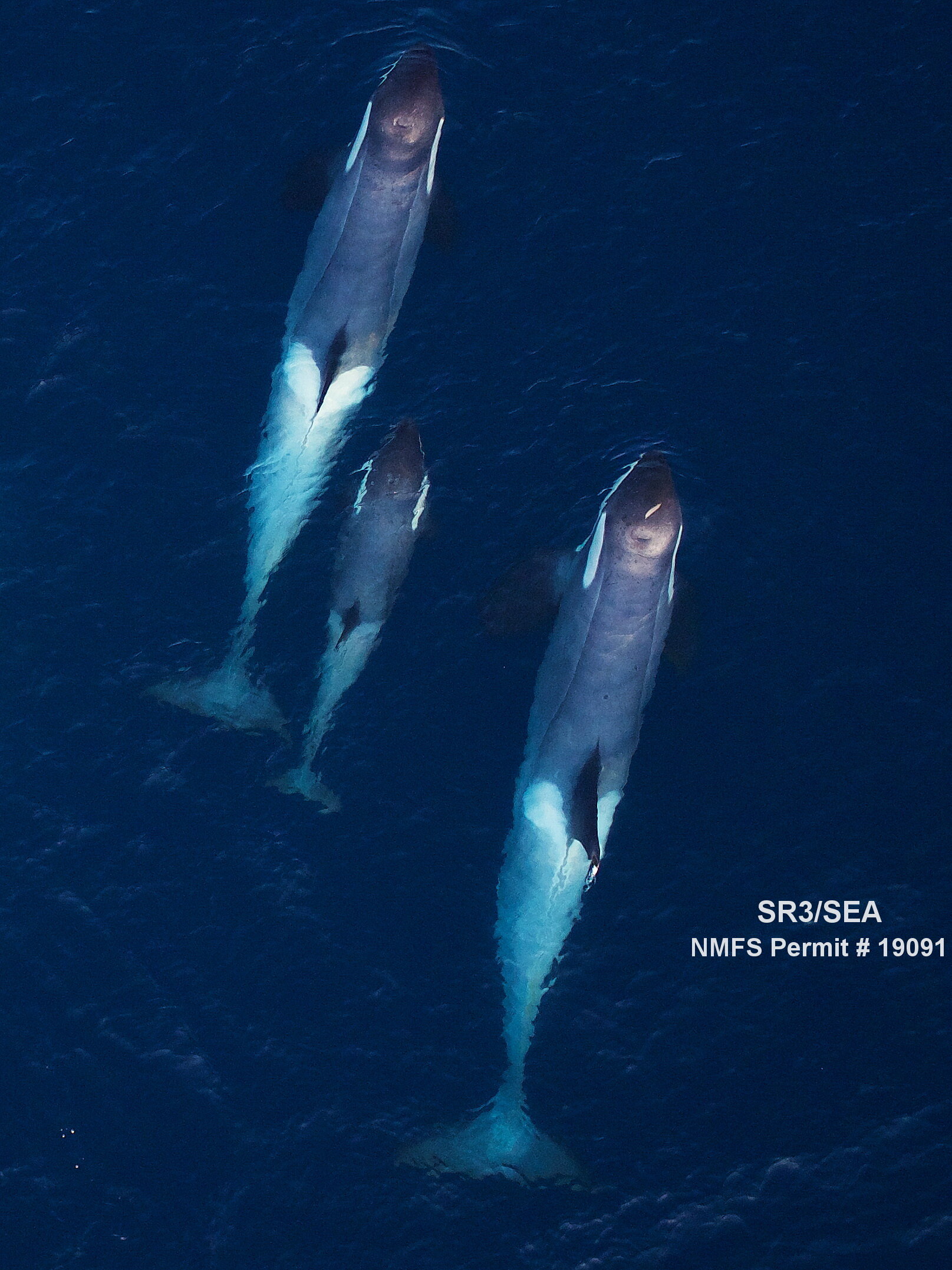This past August, SR3 and our network partners responded to an entangled humpback whale off the tip of the Olympic Peninsula (pictured above). The team, led by SR3 and Cascadia Research, arrived on scene to find the whale wrapped up so that swimming was impossible. Together we were able to free the whale within hours. Other entangled whales who go unseen or unreported may suffer for up to two years before they die from the entanglement. (2)
Whales can be caught in any type of rope or line in the water column, but active fishing gear is what most commonly entangles whales. (3) Although abandoned, lost, or derelict fishing gear can entangle whales, these account for a very small percentage of large whale entanglements. (1,4,5)
Along the West Coast, there is a network of organizations authorized by NOAA Fisheries that is working to solve the problem – not only by disentangling these whales but collecting information during the response, including:
The whale’s individual ID, injuries, and overall health
The kind of gear and how it is entangling the whale
It is through this kind of documentation that we will be able to understand when, where, and how the whale became entangled, whether the whale survives, and the impact to populations of whales. This information is critical to our work with fishermen and government agencies to prevent entanglements in the future, including through new state laws like this, which will reduce the potential for humpback whale entanglements on Washington's coast.
Each year, well-meaning mariners attempt to disentangle whales on their own. This is not only extremely dangerous for the untrained and unauthorized would-be rescuers, but inevitably life-threatening gear is left on the whale, and none of the documentation that we collect to prevent the problem is collected.
How you can help:
LOOK for entangled whales (whales swimming oddly, gear trailing behind the whale, whales covered in lice, or very skinny whales)
REPORT the entanglement immediately (Don’t wait to get back to the dock!)
-Call the NOAA Fisheries entanglement reporting hotline at 1-877-767-9425 (1-877-SOS-WHALe)
-Call the U.S. Coast Guard on VHF Ch 16
STAY with the whale. An entangled whale is rarely found again if someone doesn’t stay with them, but we have a growing network of responders who will be able to take over monitoring from you until entanglement specialists arrive.
-Stay back 100 meters from the whale. Stay alongside – never cross in front or behind the whale.
-Be careful and vigilant to avoid any entangling gear.
-Move slowly, change direction gradually – if the whale becomes agitated it will make it more difficult for responders to disentangle the whale.
DOCUMENT the whale and entangling gear. The pictures you take may be the only ones we have if the whale is lost.
Thank you for helping us find and free more entangled whales in the Pacific Northwest!
Interested in learning more about how to properly assess, document, and report critical entanglement information? You can now take a Level 1 U.S. Whale Entanglement Course online. Please note this course will not prepare or qualify you to perform or assist in the actual process of disentangling a whale.
Responding to entangled whales is a dangerous job that requires a team of highly-trained and certified responders, and SR3 regularly conducts specialized trainings to expand our region’s response capacity. A robust entanglement network is critical to successfully helping entangled whales, and we are grateful to our current partners: Cascadia Research Collective, the Makah Tribe, Washington Department of Fish and Wildlife, San Juan County Marine Mammal Stranding Network, and Oregon State University.
REFERENCES
1 Saez, L., D. Lawson, and M. DeAngelis. 2020. Large whale entanglements off the U.S. West Coast, from 1982-2017. NOAA Tech. Memo. NMFS-OPR-63, 48 p.
2 Moore M, Bogomolni A, Bowman R, Hamilton P, Harry C, Knowlton A, Landry S, Rotstein D, Touhey K. 2006. Fatally entangled right whales can die extremely slowly. Oceans'06 MTS/IEEE-Boston, Massachusetts September 18-21, 2006 - ISBN: 1-4244-0115-1, 3 pp.
3 Richardson K, Asmutis-Silvia R, Drinkwin J,Gilardi KVK, Giskes I, Jones G,O'Brien K, Pragnell-Raasch H, Ludwig L, Antonelis K ,S Barco, Henry A, Knowlton A, Landry S, Mattila D, MacDonald K, Moore M, Morgan J, Robbins J, vanderHoop J, Hogan E. 2019. Building evidence around ghost gear: Global trends and analysis for sustainable solutions at scale. Marine Pollution Bulletin. 138:222-229.
4 Lyman, E., 2014. 2013–2014 Hawai'i Large Whale Entanglements and Response Efforts Around the Main Hawaiian Islands Season-end Report. Hawaiian Islands Humpback Whale National Marine Sanctuary Accessed May 4, 2018. https://nmshawaiihumpbackwhale.blob.core.windows.net/hawaiihumpbackwhale-prod/media/archive/res/pdfs/ss2014disentangle.pdf
5 Asmutis-Silvia, R, Barco, S, Cole, T, Henry, A, Johnson, A, Knowlton, A, Landry, S, Mattila, D, Moore, M, Robbins, J, Van der Hoop, J. 2016. Rebuttal to published article “A review of ghost gear entanglement amongst marine mammals, reptiles and elasmobranchs” by M. Stelfox, J. Hudgins, and M. Sweet. Marine Pollution Bulletin. 117. 10.1016/j.marpolbul.2016.11.052.














